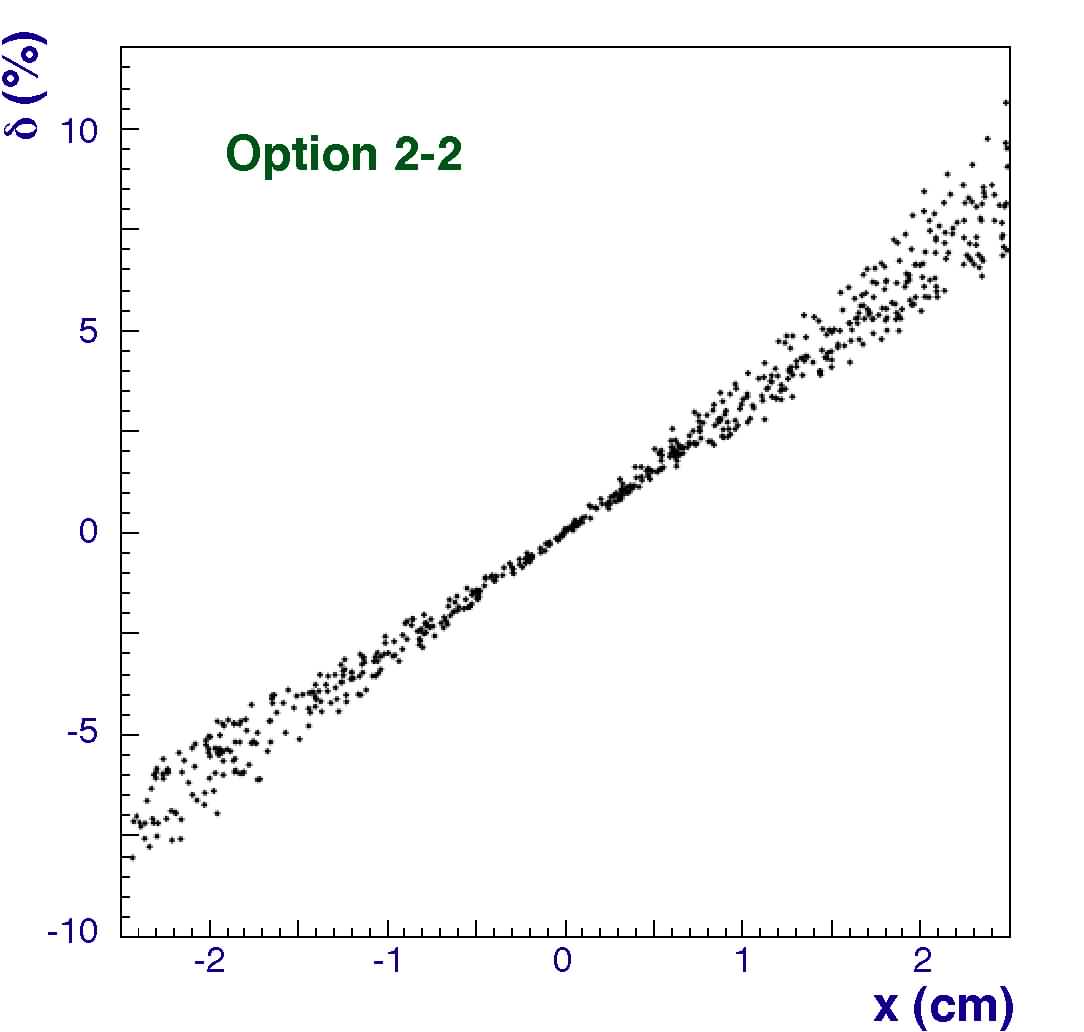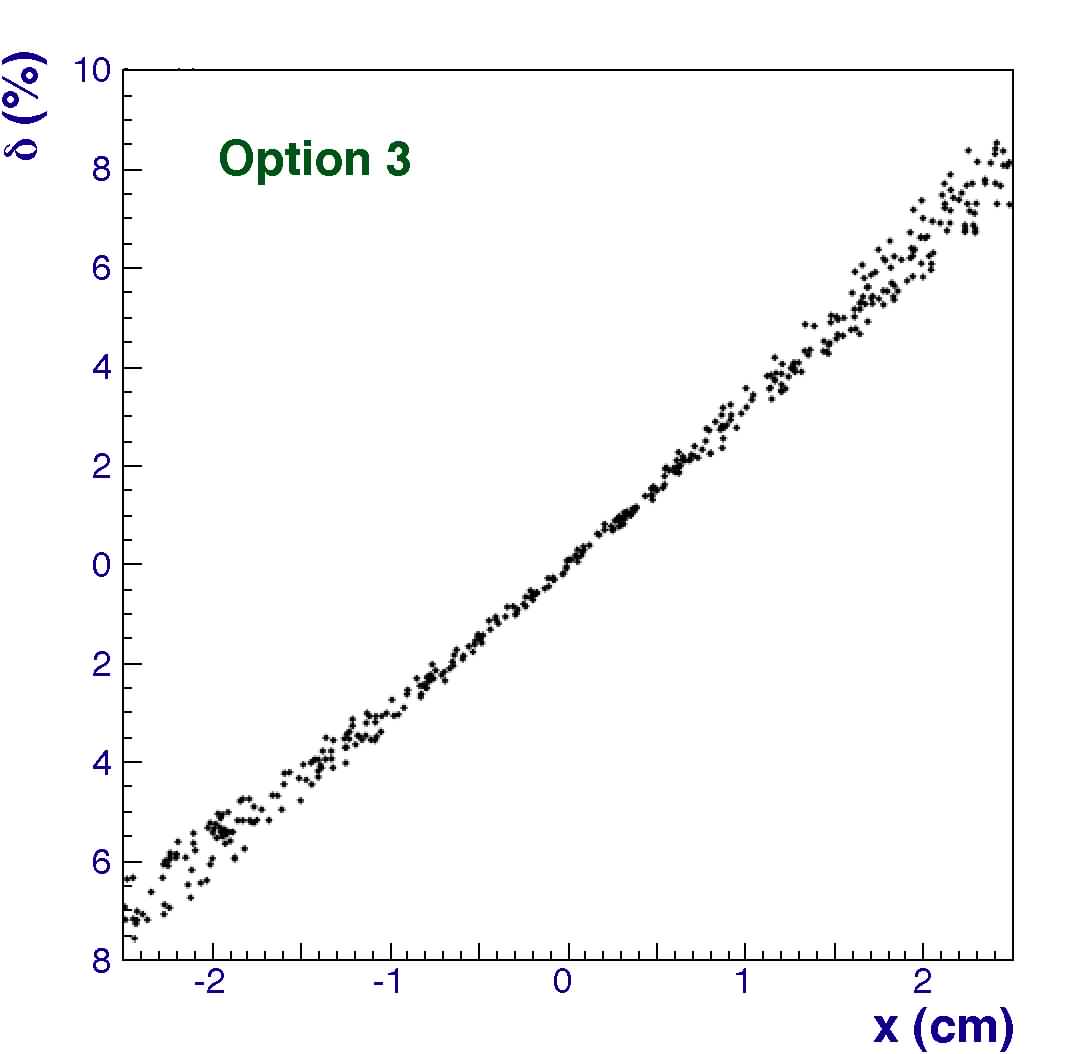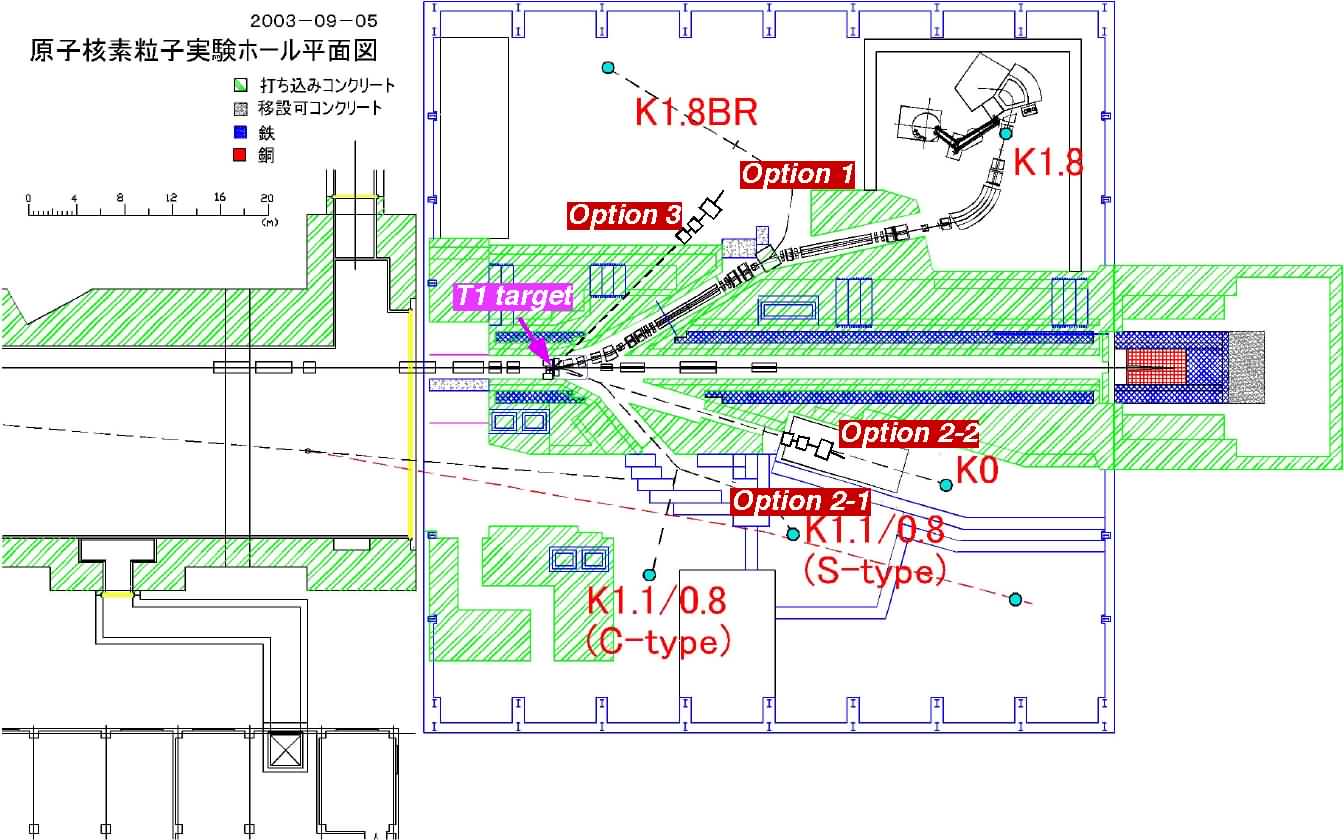
'Beamlines' for test experiments in Hadron Hall at J-PARC
1. Introduction
In the original design of the facility, a plan was made for a test experimental hall beside the switchyard and also to extract two test-experiment beams from a thin target T0. But this hall was dropped in Phase 1. Now the only possibility is to use the T1 target. Considering that T1 is crowded with beamlines and also for budget reasons, a permanent line of high performance may not be realized. The solution would then be to prepare a beam which satisfies the minimum requirements of the test beam LoI by the HE committee by coordinating the possibilities around T1. Thus, the beam availabilities will depend on other experimental program and time. In the following, several options are suggested and estimated beam intensities are shown.
2. Possible Options
| Option 1 | Use of the K1.8 branch line as a parasite or time-sharing user |
| Option 2-1 | Use of K1.1 before the start of main experiments |
| Option 2-2 | Use of KL hole before the start of main experiments |
| Option 3 | A pinhole beam extraction from T1 at the angle of 45 degrees |

3. Beamline Characteristics
| Option | 1 | 2-1 | 2-2 | 3 |
| It is.. | branch of K1.8 | K1.1 | KL-hole followed by QQD | hole in shield followed by QQD |
| ƒÓ15mm at 6m from T1 | ƒÓ30mm hole along 14.4 m | |||
| Production angle [deg] | 6 | 6 | 16 | 45 |
| Acceptance [msr*%] | 4.5 | 4.1 | 0.073 | 0.05 |
| Length [m] | 26.973 | 27.05 | 26.5 | 20.5 |
| separated | separated | unseparated | unseparated | |
| up to 1.1 GeV/c | up to 1.1 GeV/c | up to 3 GeV/c or so | up to 3 GeV/c or so |
4. Expected Intensity
The secondary particle intensities were estimated by Sanford-Wang formula for proton beams of 9micro-A at 30 GeV.
Intensity unit is 'particle per pulse'. The time structure of the beam has a 0.7s spill length with 3.53s repetition.
4-1. Positive pion intensity for each option
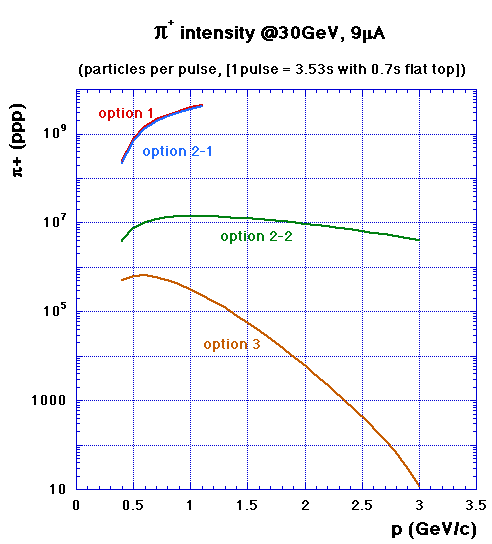
4-2. Secondary particle intensities for option 1

4-3. Secondary particle intensities for option 2-1
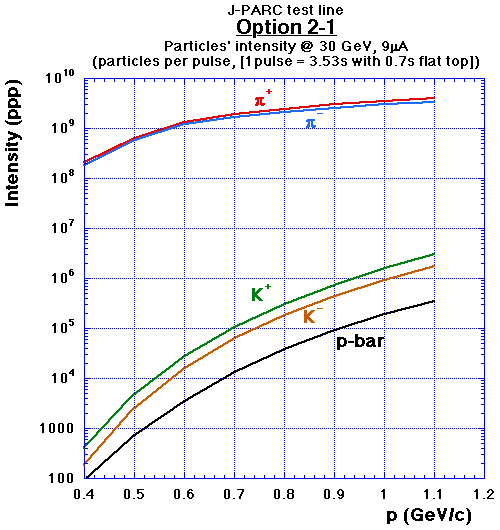
4-4. Secondary particle intensities for option 2-2
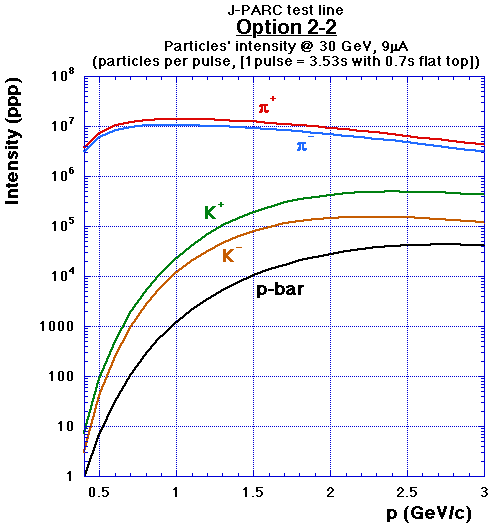
4-5. Secondary particle intensities for option 3
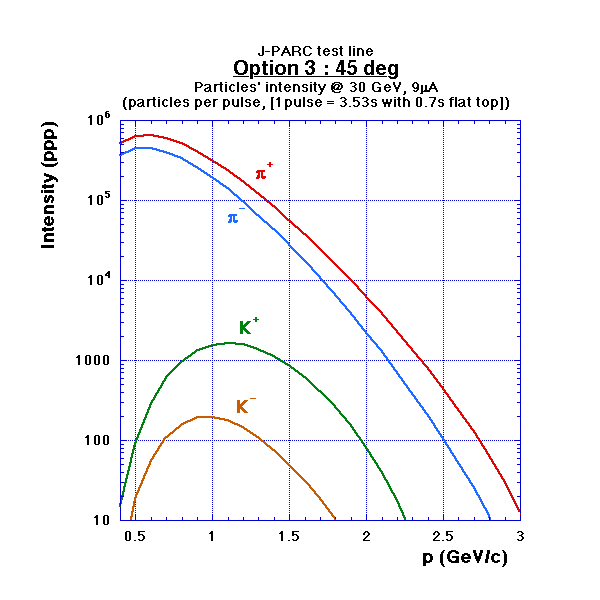
5. Comments on QQD of option 2-2 and 3
